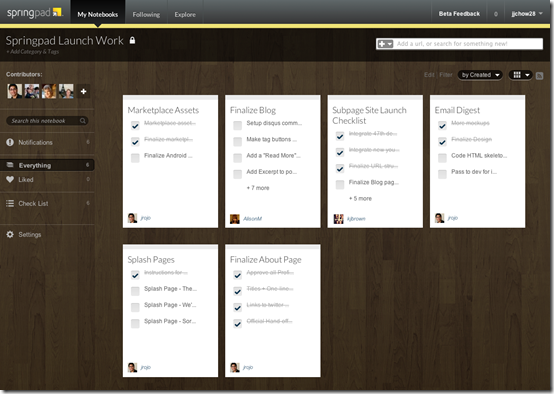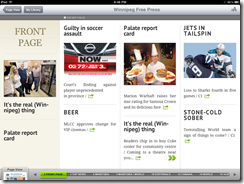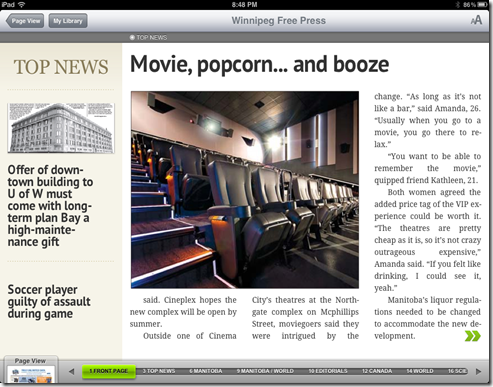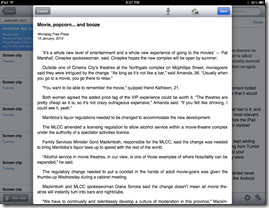
Read It Later has been one of the most popular tools of its ilk for years now, starting way back in the dark ages of 2007. Along the way, it’s found itself up against some stiff competition with apps like Instapaper, Readability and, more recently, Evernote’s Clearly, but has remained a fan favourite with over 300 connected apps and services. It’s possible that the competition was getting a bit stiff, however, because Wednesday brought about a major change: a complete re-do of the look and feel of all apps, along with a total rebrand.
Meet Pocket, Read It Later fans.
There must be something in the air or water — or maybe it’s was Big Update Month or something. Facebook pushed all of its Pages over to the new timeline feature, confusing many a marketing guru and causing some frantic thinking as to how to force people to keep liking their pages; Google continued its Google+ focused design rollout, changing the design and navigation of their social network into something more icon-driven; and Springpad dropped a bomb of a new design on its (mostly) unsuspecting userbase.
The main difference with the new Read It Later is that, while the other services have been met with responses that vary from meh to ARRRRRRGH!!!!, from what I’ve read, Pocket has been received with almost universal positivity. This is not without reason, however, as everything about Pocket is an improvement.
Look and Feel
The new look and feel is easier to navigate, and visually appealing. It kind of reminds me of the new Springpad, in some ways — but don’t worry, new Springpad haters, the icon view isn’t too huge for the design, and the list view is still there, if you don’t like it. The colors are nice, the new branding is pretty and simple, and the icons in the mobile versions are pretty much self-explanatory. It also helps that, while some views are obviously going to be different depending on the device you’re on (no grid view for iPhone for example), the interface is consistent throughout. The end result is that it is a lot easier to find your way to and through the content you’ve saved, as well as to mange it (read, unread, tags, delete).
Functionality
Pocket did the smart thing and didn’t remove functionality it’s users we’re used to. Instead, they added features that make the service even more useful! Pocket gets that the web is more than just words and that you want to bookmark more than just articles for later viewing. Now you can bookmark and view images and videos from all over the web right in your Pocket apps. On your computer or iPad, you the video pops up in an overlay, and on the iPhone, they open in the native video player — and in all services, you can launch them right from the little play button that appears on thy our bookmark’s thumbnail.
Info: Videos need an active internet connection, but articles and images still download for offline viewing.
Note: If you had a favourite app, extension, or bookmarklet for Read It Later, they should all still work with Pocket. You can also send to Pocket by email, and they’ve redesigned the official Google Chrome extension to get things into your list with a single click.
Pocket has some quick filters to aid in navigation (All Items, Articles Videos, and Images), as well as Home, Favorites, and Archives in the main menu. You can also use the search functionality, or navigate by tags, if you like.
You can still toggle between the pretty read view and the native web view for an article, and it’s now a lot easier to change the look of an article. There are only two fonts to choose from (FF Yoga for serif, and Proxima Nova for sans serif), but getting to that change, as well as changing the font size, screen brightness, or from and to night reading mode now takes no more than the touch of an obvious button. No more double-tapping on your mobile screen or any other such nonsense. The menu bar is always on and doesn’t get in the way of the reading experience.
Sharing content from Pocket is easier than ever, as well. Just hit the little share arrow-button that has become the universal app symbol to pass it on, and touch to share on Twitter, Facebook, or send to Evernote. Not enough? Hit the more button and you can copy the entire article in a single click, email the link or the entire article, open it in Safari, or send it to a multitude of services (Box.com, Buffer, Google Reader, Diigo, Delicious, Pinboard, StumbleUpon, Tumblr, and all of the major social networks). Still not enough? Scroll a bit lower on iOS and you can send it on to EchoFon,Twitter for iPhone, Twittelator Pro, and even Omnifocus and Things.
That last — Omnifocus and Things — as well as the email capability, can make the things you save into actionable tasks, which is handy. And, as a nice little add on, the share services that you used most recently are the ones that will show up before the More button the next time you open it.
Downsides?
No app is perfect, and Pocket still has a few things it needs to be the best Read It Later type app out there. For one, it needs Google+ sharing and +1 capability. That was a glaring omission from the share list — though it may not be entirely their fault, as the Google+ API is still being extended. It would also be great if Pocket had the time of day activated night mode that Instapaper has, as well Instapaper’s ability to dim images as well as text. Oh — and the ability to apply night mode to the entire app would be peachy, as well. It would save more than a few eyes when users switch from an article back to the interface when reading in the dark.
Finally, I wish Pocket had some sort of reminder feature that could be applied to articles. One of the reasons I stopped using the original Read It Later — even though I loved the idea — was that the things I saved in it would never get read. They would get clipped with the bookmarklet, apps, or the Chrome extension (the new one makes this even easier), and then I would never look at them again. I actually started using Springpad to clip my articles for exactly this reason. Yes, I can send an article to my task manager to take action on, later, but only after I’ve read it — and when you see a lot of shiny things on the web or in your reader apps, your reading list can get intimidating, fast. So, yeah… Pocket, do me a solid and add a reminder function, eh?
What do you guys think of Pocket as the new Read It Later? Success? Fail? Does it trump Instapaper for you?






















